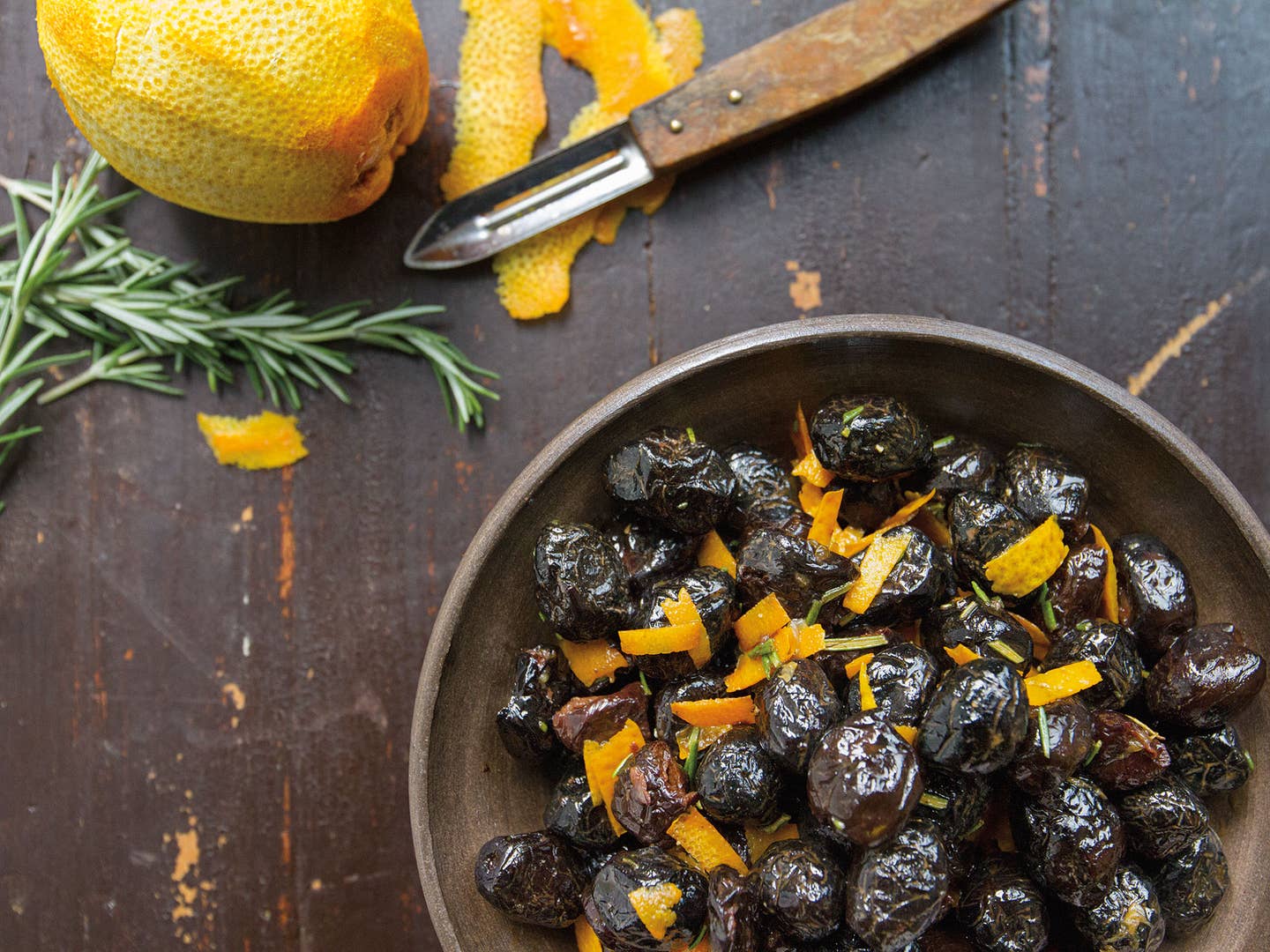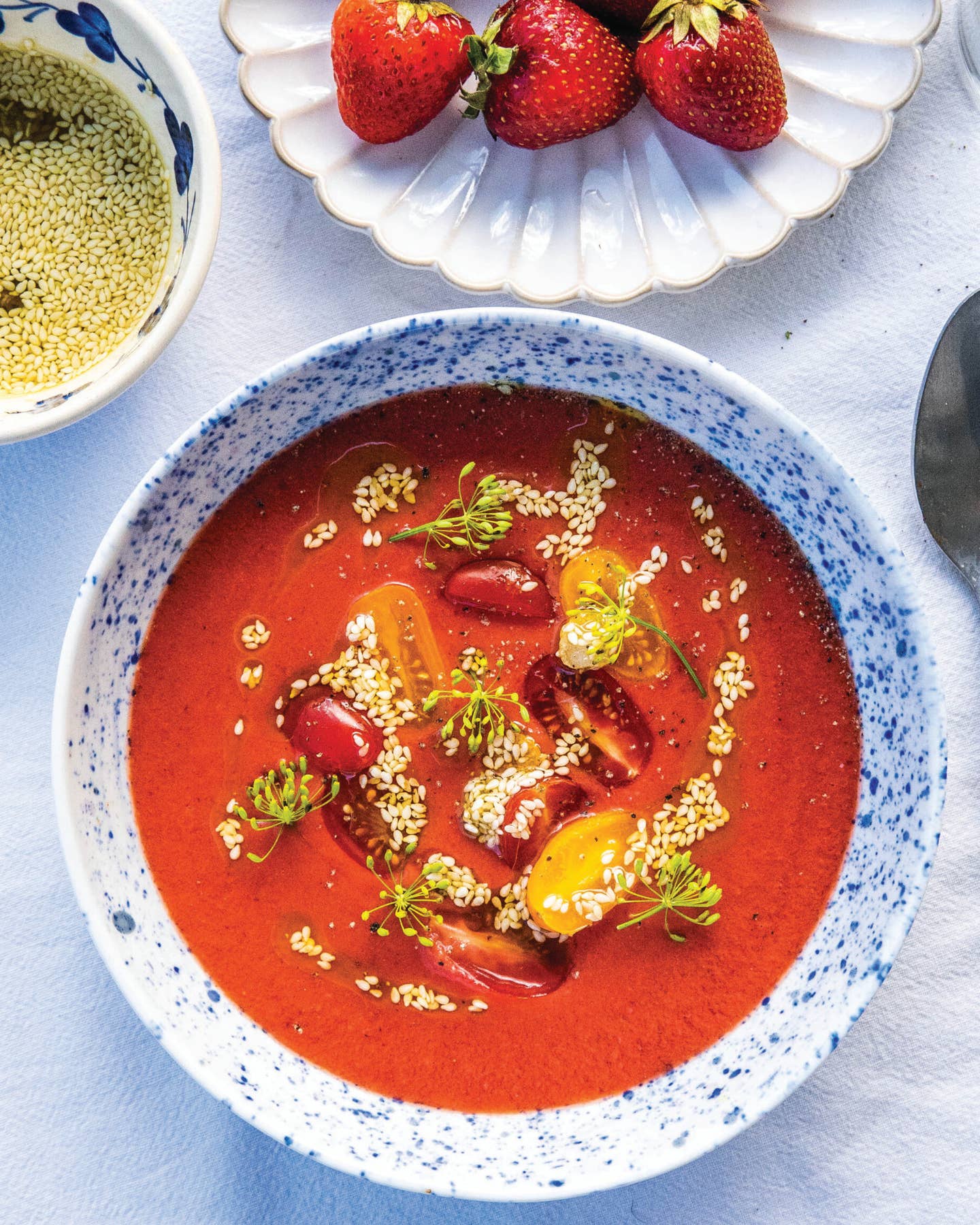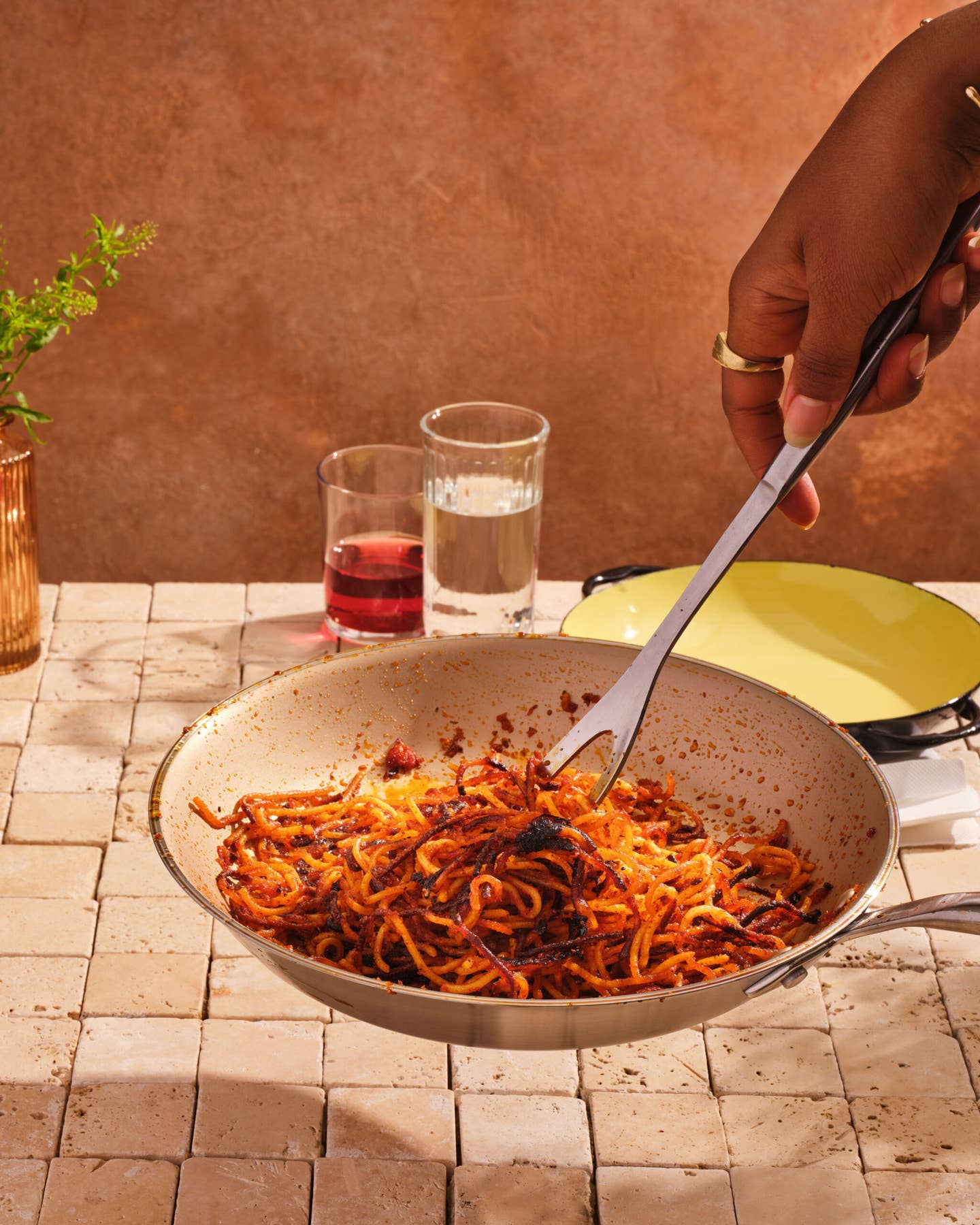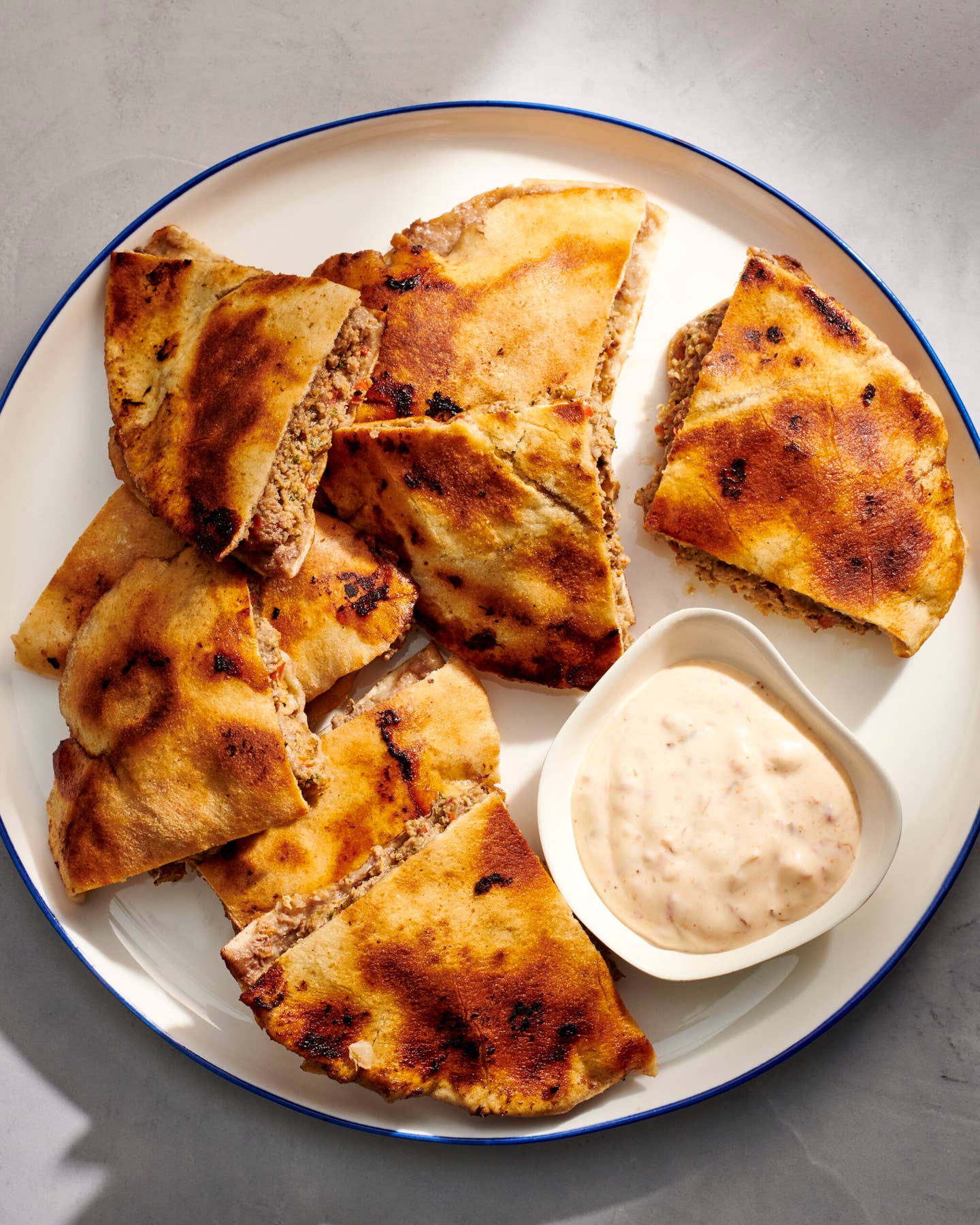
The Hater’s Guide to Loving Olives
The best introductory olive varieties and sources to turn you into a brine believer
I am an olive convert.
Less than six years ago (has it really only been six years?) I did not like olives. I always thought I should like them, since I have loved all things pickled and brined since I was an infant (not an exaggeration, there is photo evidence). But olives always just seemed to smell weird, and any time I tried to like them I found them too salty. I blame the weird, canned supermarket varieties, those round, black, non-olive entities that can be found haunting nacho platters everywhere.
Like all childhood aversions to food that persist longer than they should, all it took to change my mind about olives was trying the right kind: these ones were not too salty, with a firm flesh, and brined in wine and herbs. Call me a believer.
Now I'm addicted. I often have at least two different varieties in my fridge, and the olive bar at Sahadi's in Brooklyn, NY, makes me embarrassingly giddy. It's like I'm making up for lost time, because now I'm known as the person who brings olives to the party.
Choosing the right olive depends as much on mood as it does on what you’re using the olives for and how you plan to eat them. Here's a guide to help.
Types of Olives
The more you know about what you're serving your olives with, the more you'll know about which ones to pick. Kalamata olives are generally saltier than their green cousins, so their flavor is much more intense. Both Kalamata and Ligurian olives work great in a Summer Bolognese alongside torn basil leaves and salty parmesan. They also shine atop a grilled flatbread with sardines and caramelized onions—just make sure to pit them first!
Green olives, on the other hand, tend to be much milder, and therefore work great as background music in dishes that have bolder foreground notes. Pitted and chopped Castelvetranos add a buttery, slightly salty element to pasta tossed with briny capers, parsley, dill, and lemon zest. They're also not too showy to be stuffed with pork and beef, then deep fried like these Fried Stuffed Olives.
But my favorite way to enjoy olives is all on their own, preferably with a glass of wine. Whole Kalamatas, which are meaty and briny, are great alongside a block of feta—as are most things—while many green olive varieties are enhanced by a simple marinade. Consider these Green Olives Marinated with Wild Fennel or Lemon and Coriander Marinated Olives. Cracked, but not pitted olives, work well here, as they allow the flavors in the marinade to really get in there.
Goat Cheese Crostini with Fig-Olive Tapenade
A tangy-sweet tapenade made with dried figs, kalamata olives, and capers is the perfect foil for mild goat cheese in this easy appetizer. Get the recipe for Goat Cheese Crostini with Fig-Olive Tapenade »
Green Castelvetrano
Green Castelvetrano olives are my favorite variety, as they are exceptionally buttery and meaty with a slightly sweet flavor. They taste about as close as you can get to olives fresh off the tree, so they are usually the variety I first offer to non-olive-loving friends to convert them. Sahadi’s in Brooklyn, NY, carries both pitted and whole, which can be bought online in quantities of 16 ounces. You can also find freshly packed Castelvetranos on Amazon.
Cerignola Olives
Cerignola olives are very large olives, and are also available in cured red or black varieties. A popular table olive, the Cerignola has a very mild, unobtrusive flavor as it is usually packed in a weak brine. You can find them here and here.
Picholine Olives
Picholine olives are small green olives from the South of France that are normally packed in brine but are not allowed to ferment, resulting in a firm texture and bright green color. With a slightly bitter taste, these guys are often packed with herbs, like herbs de provence, or cured in a brine with lemon and fennel, which brings out the olive’s lovely bright notes.
Kalamata Olives
Kalamata olives, which are really more purple than black, are a firm, medium-sized Greek olive. Slightly saltier than most green olives, the Kalamata is a soft, briny olive that is best whole rather than pitted, as it tends to retain its almond-shaped form and some of its firmness this way. As they are often preserved with wine or vinegar, Kalamatas usually have a bold, strong taste.
Moroccan Olives
Moroccan olives, or oil-cured olives, are small dark olives that have been cured in—you guessed it—oil, resulting in their wrinkled and oily surface. They are very soft, slightly bitter olives, with a winey, woodsy quality. You can find them online through New York’s Zabar’s or from Amazon.
Gaeta Olives
Gaeta olives, called the “black pearl of Italian olives” and known under several other names, are cultivated in the Lazio region of Italy. After being aged for eight months in a simple water and salt brine, which gives them a smooth texture, the olives are massaged in oil, resulting in their mild, sweet flavor. They can be bought in 1 pound quantities on Amazon or at GaetaOlives.com. If you like these, you’ll also be into French Nicoise olives, which are small, firm, and have a very assertive flavor.
Mixed and Stuffed Olives
Still undecided about which kind of olive will convince you to get on the olive train? Consider trying out an olive mix, which basically functions as a greatest hits album. These Byzantine Country Olives include Kalamata, Lonian green, Amfissa, and cracked green and Atalanti olives. This marinated olive duo with lemon and herbs from Trader Joe's is vacuum-packed for freshness and is surprisingly delightful with its balance of mild green and black olives.
Or consider a foray the wide, wonderful world of stuffed olives, where basically nothing is off limits. Garlic stuffed olives, while quite salty, pack a sharp but slightly fruity punch with the addition of pickled garlic. For something worthy of an antipasti platter, try out these firm Queen olives stuffed with orange peel.
With so many options, it’s a wonder I ever waited so long to join the grown-ups and fall in love with olives. Backup career plan: cultivate own olive tree farm so they’ll never be far from hand.
VIDEO: How to Make Olive Tapenade
Keep Reading
Continue to Next Story










